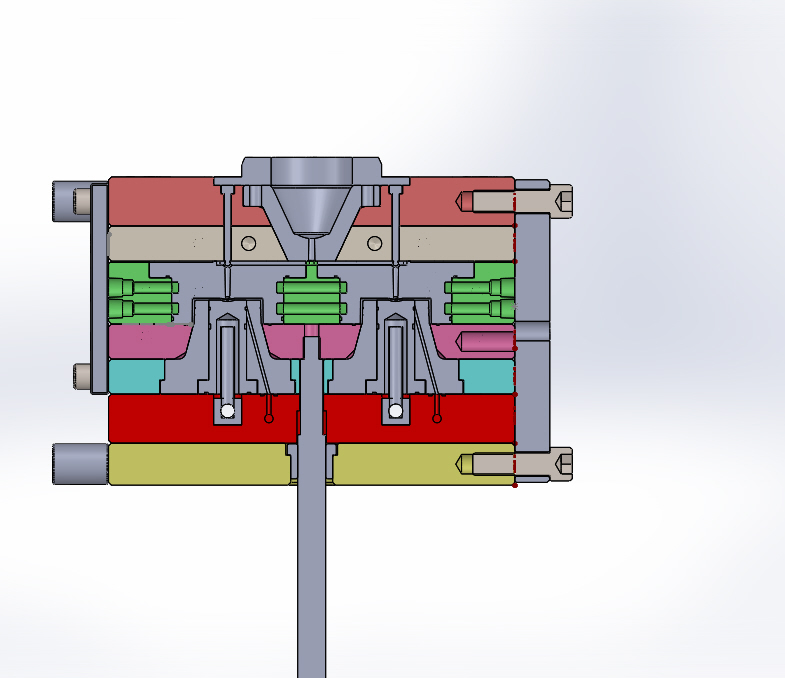- Home
- Lean Principles
- Machine Selection
- Mold Design
- Mold Interlocking
- Mold Making
- Plastic Material Technology
- Molding Process
- Plastic News
- What's New
- Privacy Policy
- Disclaimer
- Site Map
- Poll
- Polishing
- 3D Rapid Prototyping
- Molding Companies
- Contact Us
- Proven Thinwall Packaging Mold Designs For Sale
- MOLD WEIGHT CALCULATOR
- HOT RUNNER VERSUS COLD RUNNER
The Benefits Of The 7 Wastes
A plastic injection molding company using the 7 wastes method will benefit by having reduced costs, higher profits and will produce better quality parts.
What Are The 7 Wastes About?
It is a lean method which identifies key areas of waste in a manufacturing process.
It is about identifying which steps add value and which steps do not.
The 7 areas analyzed are:
- Defects
- Over Production
- Over Processing
- Waiting
- Transportation
- Motion
- Inventory
1.Defects
It takes just as much time and energy to produce a defect part as it does to produce a good part.
Making a defect part is costly because not only does the part need to be made again which uses more material and time, other jobs which were scheduled to go into that molding machine have to be delayed, potentially blowing out delivery lead times and having to deal with angry customers.
If your reject rate is 10% then your production time is 10% longer and you use 10% more material – your customer will not reimburse you for this.
2.Over Production
Over production means producing parts before they are required.
If an assembled part is made up of 2 pieces and one part has a shorter cycle time than the other then this is over production.
There is waste in this process in two ways.
The first is in having to hold extra inventory of the slower cycling part so that the assembly station does not have to wait.
The second is the extra time it takes to make the part with the longer cycle time.
Why not modify the part and mold design so that both parts cycle at the faster cycle?
3.Over Processing
Over processing is seen as any extra unnecessary step that does not add value to the process.
An injection molder is expected to produce parts that fall within certain quality specifications for his customer to accept them.
If the specified part weight is 15.0 grams plus or minus 0.3 grams then it’s better to aim for the lower range of 14.7 grams to save material cost (assuming nothing else is effected).
The customer will not pay more if the parts are in the upper range even though it cost more to make.
4.Waiting
Waiting for materials, equipment or people is a sign of poor planning if it happens on a regular basis.
Waiting adds to the manufacturing cost of each part made because it is effectively increasing cycle times.
5.Transportation
Moving raw plastic material to a molding machine and then moving the molded part to the storage area is transportation.
Although transportation is necessary,the most efficient path is not always taken.
This is a result of poor factory layout.
Every time something is transported, not only does it take time and energy, it is also at risk of being damaged or lost and having to be made again.
To minimizing transport study your factory layout.
6.Motion
Unnecessary movements are a waste of motion.
If tools are not in their proper place and a die setter needs to go searching for them then this is wasted motion.
7.Inventory
Inventory relates to raw materials and finished goods.
Having more inventory than required ties up money that could be used for other things.
Having an excess of plastic material not only ties up money, it consumes valuable floor space.
Additional Comments
The 7 wastes is a powerful method in identifying and eliminating waste in the entire manufacturing process.
But it is more than this.
The seven wastes is also about encouraging people to think differently about their work environment. When this mind set is reinforced over time, huge benefits will naturally flow to both the injection molder and their customers.
Return from The 7 Wastes to Lean Principles
Return from The 7 Wastes to Improve Your Injection Molding Homepage





